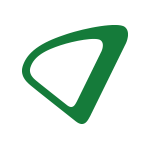An ‘insightful strategy’, he says, is about ensuring you’re working with facts not assumptions.
“We don’t develop programmes based solely on gut feeling. We want to be confident our strategy is reflective of what people want and need. We want to know we’ve done the due diligence by speaking to patients and healthcare professionals, and that we’ve drawn out the insights that are most important.
“As communicators, all the work we do is scrutinised. We’re providing a voice for pharma, and with so many channels available to us to talk about what we’re doing, we need to find the value in the work we do more than ever.”
Aurora’s managing director Siân Hurst adds that committing to the value of data-driven communications is a matter of reputation. Good use of data and budgets will increase trust between all stakeholders, particularly patients who are pharma’s customers of the future.
“How pharma can work directly with patients in the future is something we’re thinking about now. Advancing technology and pay-as-you-go healthcare mean that patients know more, want more and expect more from their healthcare and importantly, they’re generating more data than ever before that can help shape decisions and guide our programmes of work.



